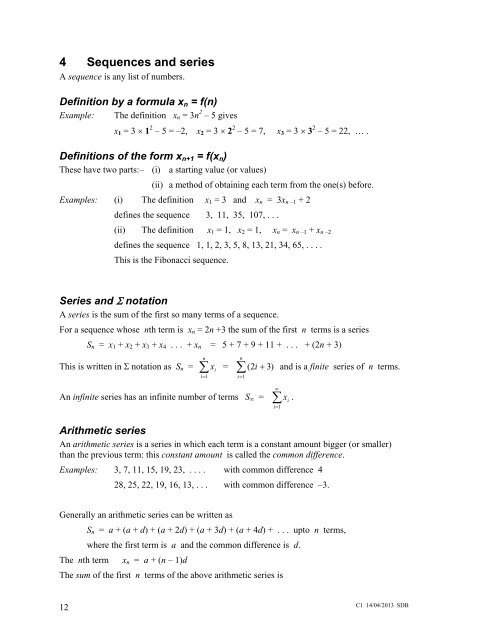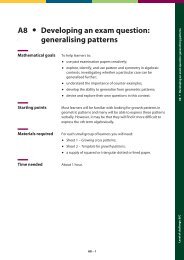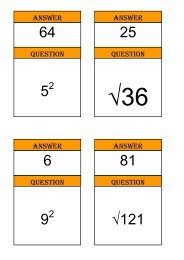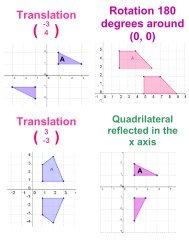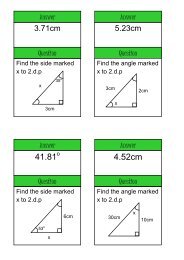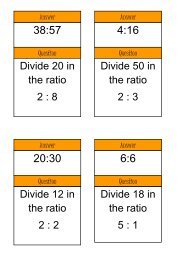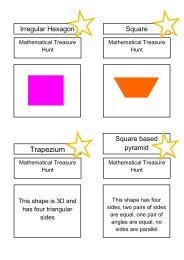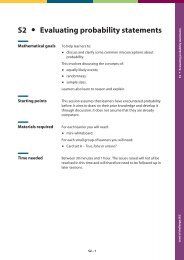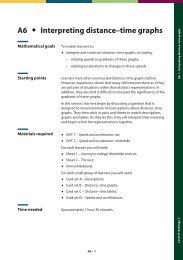Core Maths C1 Revision Notes - Mr Barton Maths
Core Maths C1 Revision Notes - Mr Barton Maths
Core Maths C1 Revision Notes - Mr Barton Maths
Create successful ePaper yourself
Turn your PDF publications into a flip-book with our unique Google optimized e-Paper software.
4 Sequences and series<br />
A sequence is any list of numbers.<br />
Definition by a formula x n = f(n)<br />
Example: The definition x n = 3n 2 – 5 gives<br />
x 1 = 3 × 1 2 – 5 = –2, x 2 = 3 × 2 2 – 5 = 7, x 3 = 3 × 3 2 – 5 = 22, … .<br />
Definitions of the form x n+1 = f(x n )<br />
These have two parts:– (i) a starting value (or values)<br />
(ii) a method of obtaining each term from the one(s) before.<br />
Examples: (i) The definition x 1 = 3 and x n = 3x n –1 + 2<br />
defines the sequence 3, 11, 35, 107, . . .<br />
(ii) The definition x 1 = 1, x 2 = 1, x n = x n –1 + x n –2<br />
defines the sequence 1, 1, 2, 3, 5, 8, 13, 21, 34, 65, . . . .<br />
This is the Fibonacci sequence.<br />
Series and Σ notation<br />
A series is the sum of the first so many terms of a sequence.<br />
For a sequence whose nth term is x n = 2n +3 the sum of the first n terms is a series<br />
S n = x 1 + x 2 + x 3 + x 4 . . . + x n = 5 + 7 + 9 + 11 + . . . + (2n + 3)<br />
n<br />
x i<br />
i=<br />
1<br />
This is written in Σ notation as S n = ∑<br />
n<br />
= ∑ ( 2i<br />
+ 3)<br />
and is a finite series of n terms.<br />
i=<br />
1<br />
An infinite series has an infinite number of terms S ∞ = ∑ ∞<br />
i=1<br />
Arithmetic series<br />
An arithmetic series is a series in which each term is a constant amount bigger (or smaller)<br />
than the previous term: this constant amount is called the common difference.<br />
Examples: 3, 7, 11, 15, 19, 23, . . . . with common difference 4<br />
28, 25, 22, 19, 16, 13, . . . with common difference –3.<br />
x<br />
i<br />
.<br />
Generally an arithmetic series can be written as<br />
S n = a + (a + d) + (a + 2d) + (a + 3d) + (a + 4d) + . . . upto n terms,<br />
where the first term is a and the common difference is d.<br />
The nth term x n = a + (n – 1)d<br />
The sum of the first n terms of the above arithmetic series is<br />
12<br />
<strong>C1</strong> 14/04/2013 SDB


